Tridonic Rechargeable batteries
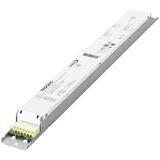

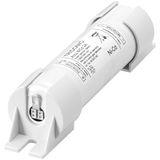



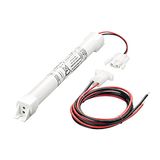
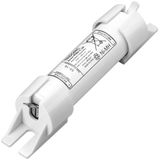
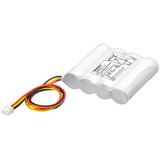
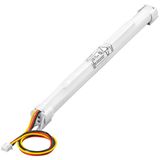


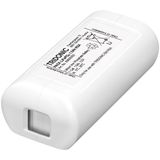

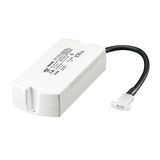
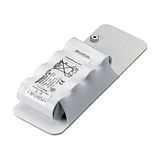
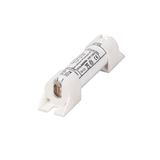
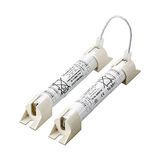
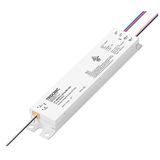
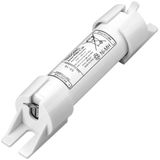

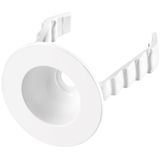


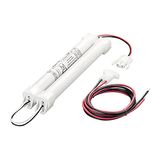
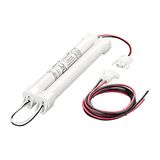
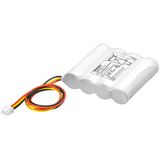
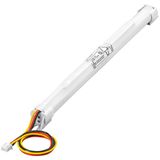
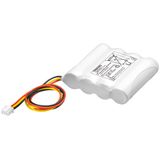
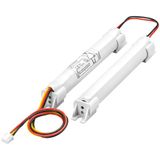


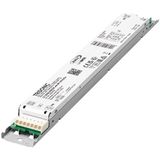
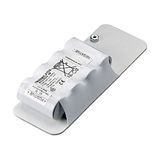
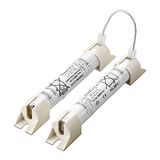
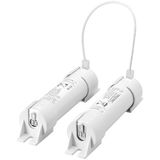

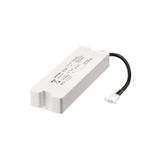
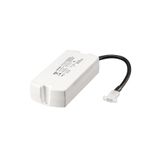

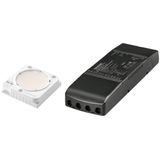
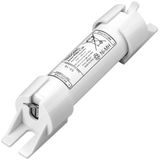
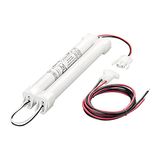

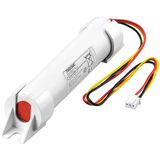

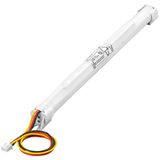
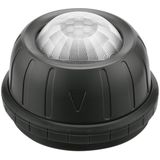
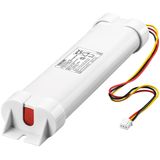


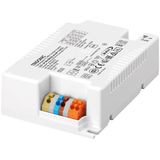
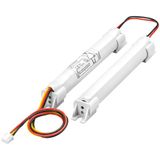
tridonic rechargeable batteries brand context and scope
Emergency luminaires live or die on predictable autonomy and easy service. Packs are built around NiMH and LiFePO₄ chemistries with 1–3 h targets, PF-friendly chargers, and thermistor leads for temperature-qualified charging. For tridonic rechargeable batteries, typical configurations are 3.6–12 V nominal, 0.7–9.0 Ah, and operation −20…+50 °C (discharge) with charging windows set tighter by chemistry. Installers want keyed connectors, clear capacity labels, and loop-in space inside gear trays or remote boxes that can sit in warmer plenums without cooking the cells.
tridonic battery packs range and form factors
Linear stick packs (Ø22–26 mm) slide behind reflectors; flat “blade” formats suit slim panels; remote IP65 boxes handle dusty or damp zones. Harnesses include NTC, polarity-keyed plugs, and flying leads long enough for quick gear-tray swaps. Using tridonic battery packs in one project family keeps autonomy calculations, charge currents, and bracket kits the same across floors, so spares and commissioning records stay aligned.
tridonic lithium batteries technical specifications and standards
LiFePO₄ is the default where long life and thermal stability matter. Expect 3.2 V per cell (1S, 2S, 3S stacks common), 1000–2000 cycle envelopes to 80 % SoH when held near 25 °C, and low self-discharge that preserves autonomy between tests. Chargers run CC/CV with cell temp gates from the NTC, soft-start to limit inrush, and end-of-charge verification before float. Compliance references: EN 60598-2-22 for emergency luminaires, IEC/EN 61347 for control gear interfaces, IEC 62133-2 for Li-ion safety, and UN 38.3 for transport. In mixed chemistries, keep NiMH and tridonic lithium batteries on separate charger profiles; do not parallel strings unless the datasheet explicitly allows it.
tridonic emergency batteries applications and compatibility
Office, education, healthcare, and logistics installs typically need 1 or 3 hours at 650–1200 lm emergency output depending on optic and spacings. Packs pair with DALI-2 emergency drivers for auto and function tests; results land in BMS via 62386-202/203 gateways. Remote mounting helps high-ambient bays and sealed IP65 housings where heat is the enemy. When selecting tridonic emergency batteries, check ambient at the pack, not just the luminaire label; autonomy at 45–50 °C is the real constraint on aisle runs and plant rooms.
tridonic battery modules integration with other brand products
LED gear from the same ecosystem means connectors, charging currents, and test regimens match out of the box. tridonic battery modules plug into driver harnesses with coded headers, and the test button/indicator kits share cut-out sizes across panels. Cross-reference in specs to Tridonic emergency drivers, Tridonic DALI-2 sensors, and Tridonic luminaires so loop drawings show one connector map and one set of breaker/inrush tables.
tridonic backup power units selection criteria for B2B buyers
Start with autonomy and ambient: 1 h at ta 40–45 °C needs more amp-hours than the same rating at 25 °C. Fix chemistry by duty—NiMH for cost-sensitive interiors, LiFePO₄ where life and temperature tolerance dominate. Size charge current vs circuit diversity; emergency channels often sit on limited spare capacity. Confirm connector family, cable length, and mounting footprint. For tridonic backup power units, add service notes to drawings: test interval, expected replacement window, and recycling route so maintenance can plan stock and disposal.
tridonic rechargeable power cells advantages of working with Bankoflamps
Projects run smoother when procurement matches commissioning. You get project-specific pricing, near-hour quotes by EAN/MPN, and live EU stock before lifts and night shifts are booked. The portal shows lead times, status, and downloadable price lists with validity you can plan around. Trusted clients can use post-payment up to 30 days. We consolidate shipments so packs, harnesses, test buttons, brackets, and remote boxes arrive room-bundled; your account manager cross-checks capacities, connector types, ambient limits, and autonomy tables against drawings. For deployments built on tridonic rechargeable power cells, that means fewer site surprises across France, the Baltics, Germany, Spain, Italy, Belgium, and the Netherlands.
Technical specifications and standards
- Chemistries: NiMH cylindrical sticks; LiFePO₄ prismatic/cylindrical.
- Electrical: 3.6/4.8/6.4/9.6/12.8 V nominal families; charge profiles matched to chemistry; ripple and inrush kept within driver limits.
- Protection: PTC or resettable fuse, NTC for temp-qualified charging; short-circuit and reverse-polarity resilient harnesses per datasheet.
- Environment: charge 0…+45 °C (chemistry-dependent), discharge −20…+55 °C; storage 20–30 % SoC in cool, dry conditions.
- Safety and transport: IEC 62133-2 (Li systems), IEC 61951-2 (NiMH), UN 38.3, and marking for recycling compliance.
- Emergency context: EN 60598-2-22 luminaires; interfaces to DALI-2 emergency test gear; 1–3 h autonomy variants with lumen tables per optic.
Applications and compatibility
Open-plan offices: remote packs outside hot ceiling pockets; weekly function tests logged to BMS.
Healthcare and education: CRI-critical luminaires with maintained mode; low-flicker emergency drivers.
Warehouses and cold stores: LiFePO₄ with elevated capacity at low temperatures; remote housings rated IP65.
Transit and retail: compact packs for shallow fixtures; quick-release brackets for swap speed.
Product range and series overview
- Stick and blade geometries covering common tray layouts.
- Remote enclosures with glands and strain relief for IP65 tasks.
- Accessory kits: test buttons, green indicators, mounting clips, and harness extensions.
- Capacity steps that align with common 1 h and 3 h photometric families so emergency spacing plans remain intact
Selection notes for estimators and installers
Publish autonomy and ambient per circuit. Label packs by voltage, capacity, chemistry, and replacement year. Keep one connector standard across the job. Confirm clearance around drivers to avoid heat soak. Plan recycling with serial capture so end-of-life is predictable.